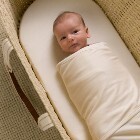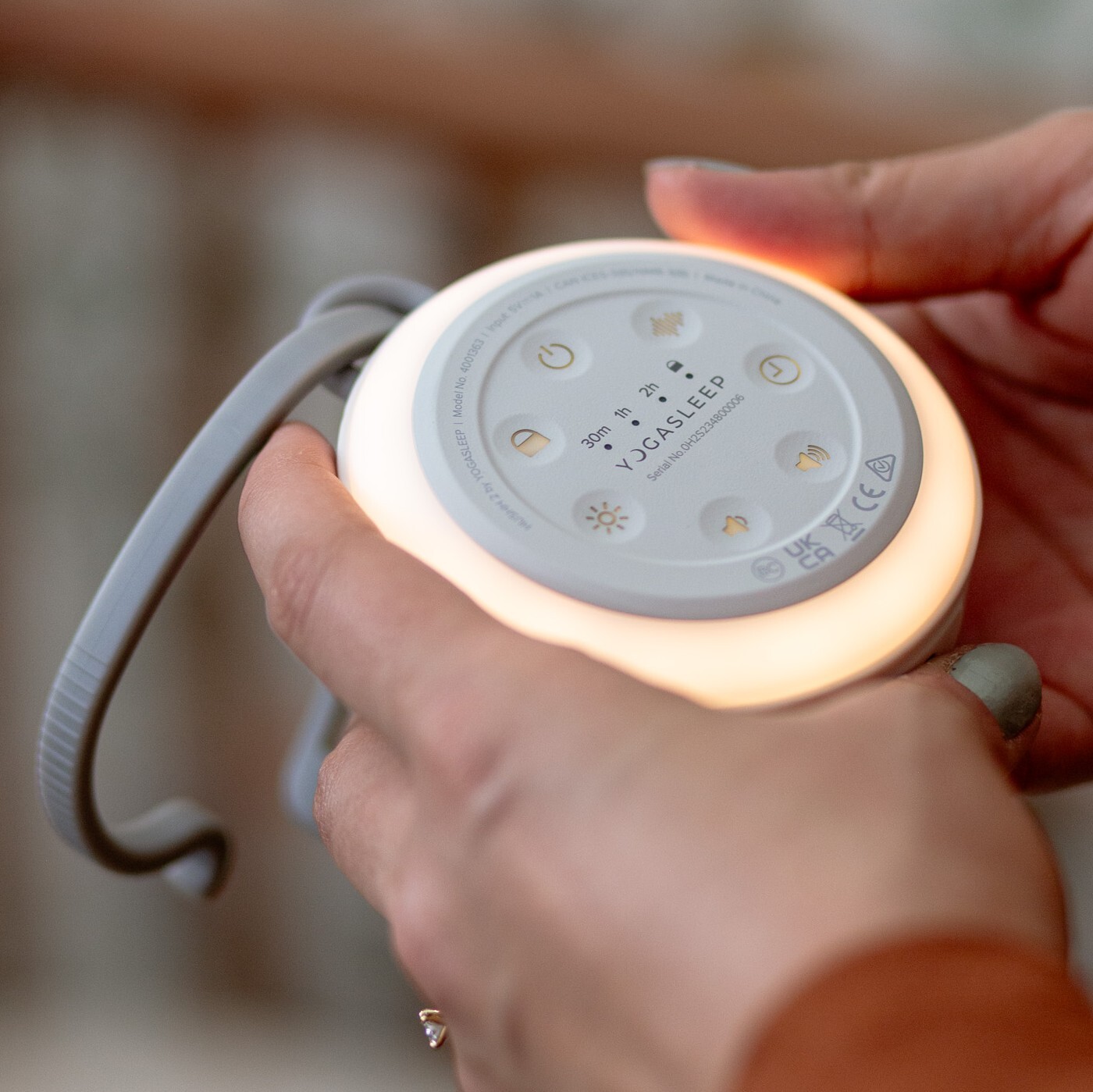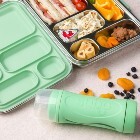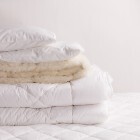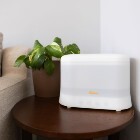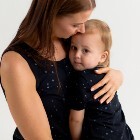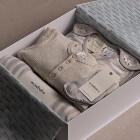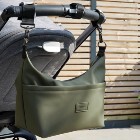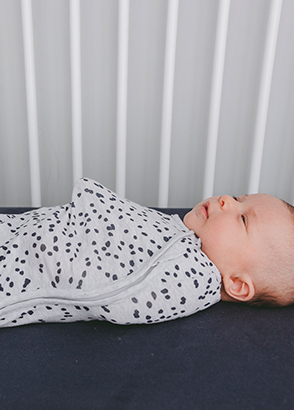Swaddling is an ancient art which is extremely popular with today's parents, as it is such an effective tool for better baby sleep. However we would like to ensure you are well informed about how to swaddle your baby safely, so you can enjoy the benefits of both better sleep and peace of mind!
Safety Issues with Swaddling
Side or tummy sleeping
Sleeping swaddled and on the tummy has 7 times the risk of SIDS as swaddled back sleeping. Do not sleep your baby on their tummy please! And sleeping babies on their side and swaddled can also be risky, as they can easily roll over onto their tummy during the night.
Swaddled babies must ONLY sleep on their back.
A sleep wedge DOES NOT keep your baby safe. We do not sell them and strongly advise you NOT to use a wedge for side sleeping or to try and stop a baby rolling.
We also strongly recommend ALL babies sleep on their back, whether they are swaddled, in a sleeping bag or in regular bedding.
Bedsharing
Babies should never be swaddled if you bed share. Bedsharing can result in babies inadvertently rolling from feeding on their side and falling asleep and also there is a greater risk of overheating if bedsharing with warmer bedding.
So if you expect to bedshare or accidentally bedshare, babies must not be swaddled.
Our advice would be to always have your bed set up for safer bedsharing if you feed in bed and always remove a swaddle before feeding in bed. If you expect to bedshare, just don't swaddle your baby.
Overheating
Parents need to be aware of the possible risk of overheating when swaddling, as over-heating is one of the key risk factors for SIDS. However it is essential to state that swaddling does not cause over-heating. Overheating is caused by baby getting too hot from a number of possible factors, such as using too much bedding, the room being too hot or baby wearing a hat in bed.
Anti-natal education must cover how to sleep babies safely, including avoiding the causes of overheating.
Overheating is caused by a combination of the following:
-
too many layers of bedding
-
using synthetic bedding, such as polar fleece type blankets
-
using a thick blanket or polar fleece blanket for wrapping baby
-
using too many layers of clothing
-
using thick layers of non-breathable clothing, such as polar fleece sleepsuits or babygrows
-
using a sleeping bag that is too hot and has arms
-
using a hat while baby is asleep
-
having the bedroom too hot
To avoid overheating, we strongly recommend the following:
-
Only sleep your baby in light layers of natural fibre clothing - merino, cotton, viscose from bamboo
-
Choose merino clothing if you can, as it is the only fibre that helps babies to regulate their temperature.
-
If you choose to use blankets, only use natural fibre light blankets - NEVER USE use polar fleece bedding with babies.
-
Keep the room temperature between 18-20 degrees if possible. If the room is warmer than 20 degrees, start reducing the amount of clothing and bedding used.
-
NEVER use a hat when baby is sleeping.
-
Choose a light swaddle made from 100% natural fibre - cotton or merino
-
Always consider the total number of layers including the swaddle! You likely won't need a swaddle AND blankets unless it is very cold.
-
If your baby is red or sweaty, remove layers of clothing or bedding as soon as possible.
Recommended Swaddles
NO hats or headbands
NEVER use a hat when your baby is sleeping.
Even if you think babies look cute wearing a hat or headband on Instagram, we STRONGLY urge you to resist this fashion trend and never use a hat or headband on your sleeping baby.
STOP swaddling before baby is rolling:
Once your baby is close to rolling, you need to quickly wean off swaddling. Swaddled babies sleeping on their tummy have 7 times the SIDS risk of swaddled babies sleeping on their back.
So if your baby can potentially roll onto her tummy while she is asleep, then this could be very unsafe.
The American Academy of Pediatrics recommends stopping swaddling by 2 months, as very rarely a baby will roll that early. It is much more common that babies start to roll onto their tummy at 4-5 months, and effective swaddling actually reduces the likelihood of rolling.
From 2 months it is a good idea to start baby sleeping in a transition swaddle, so at least one or both arms are out of the swaddle.
We recommend you closely watch for signs your baby is close to rolling and swap to a sleeping bag as soon as baby shows signs of being close to rolling.
Hip health
Swaddling has been linked to problems with babies' hips. Much of this issue is linked to a more traditional style of swaddling where the babies legs were restrained and there was no movement possible for legs or hips, and babies were kept in that rigid position for a long period of time. For example, American Indians swaddled their babies onto a 'cradle board', i.e. wrapped to a piece of wood, and carried them for long periods of time.
If your baby has any issues with their hips or there is a family history of hip dysplasia, you may want to choose a baby sleeping bag or ask us about the widest swaddles.
However please be assured that all the fitted swaddles we sell are hip healthy choices. All our swaddles have plenty of space and stretch for babies to have their hips and legs in any position they choose.
Other hip healthy tips:
-
Use stretchy cotton swaddles or wraps that allow plenty of wriggle movement for the legs
-
Do not force your baby's legs into a particular position or force them to be straight.
-
Choose swaddles that have plenty of space for leg and hip movement, including legs opening into a frog position.
-
The Purflo Swaddle to Sleep Bags are approved by International Hip Dysplasia Institute for healthy hips.
-
Read more about swaddling and hips & more here
Risk factors for hip dysplasia issues:
Low levels of amniotic fluid in the womb during pregnancy can increase a baby's risk of DDH. Other risk factors include:
-
Being the first child
-
Being female
-
Breech position during pregnancy, in which the baby's bottom is down
-
Family history of the disorder
Further information
If you have any questions about swaddling and safety, please ask! Or we strongly recommend reading this excellent article from Dr Harvey Karp, leading American pediatrician, swaddling expert and Fellow of the American Academy of Pediatrics.



